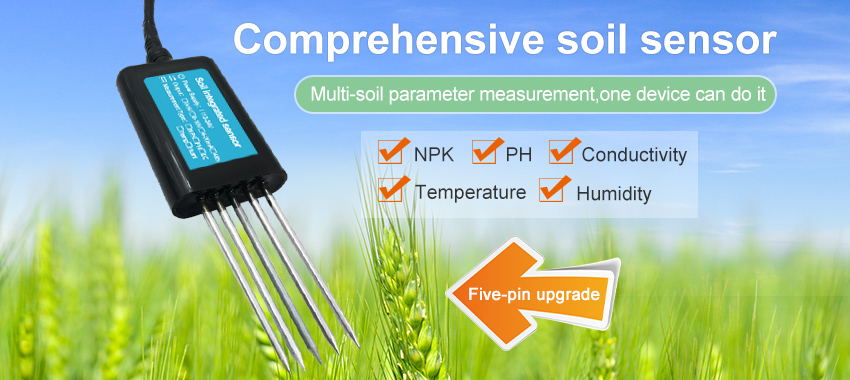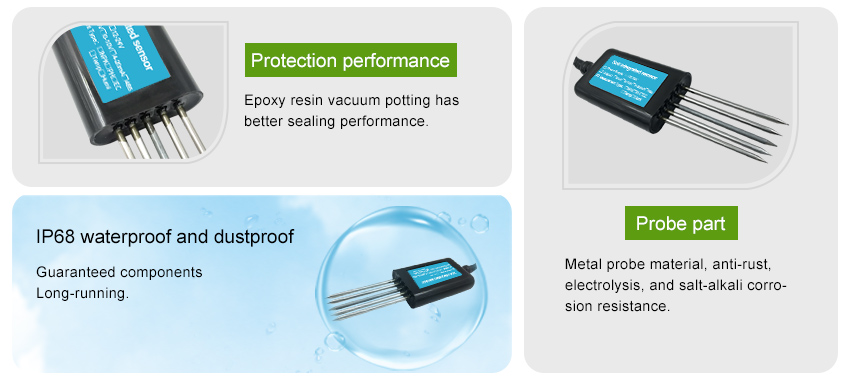Agriculture is undergoing a transformative phase, thanks to technological advancements that are revolutionizing traditional farming practices. One of the most significant breakthroughs in this field is the emergence of soil sensor technology. By leveraging the power of soil sensors, farmers can unlock the full potential of their crops by gaining valuable insights into the soil's health and making data-driven decisions regarding irrigation, fertilization, and overall crop management. In this article, we will explore how soil sensor technology is transforming agriculture, driving higher crop yields, and ensuring sustainable farming practices.
The Role of Soil Sensors in Agriculture
Soil sensors are specialized devices that are designed to monitor various parameters in the soil, including moisture levels, temperature, nutrient content, and pH levels. These sensors can be strategically placed within the fields to collect accurate and continuous data throughout the growing season. With real-time data on soil conditions, farmers can make informed decisions and optimize their farming practices accordingly.

Collecting and Analyzing Soil Sensor Data
The first step in utilizing soil sensor technology is the collection of data. Soil sensors collect information from the soil and transmit it to a central database or platform. Farmers can access this data through computer systems or mobile applications. The data collected provides crucial insights into the soil's condition and allows farmers to monitor changes over time.
Once the data is collected, advanced algorithms and statistical models are employed to analyze it. This analysis helps identify patterns, trends, and correlations in the data. For example, by analyzing moisture level data, farmers can determine the optimal irrigation schedules for their crops. They can avoid both over-watering and under-watering, ensuring that plants receive just the right amount of water for optimal growth.
Similarly, analyzing nutrient content data can guide farmers in determining the precise amounts and types of fertilizers to apply. By understanding the nutrient requirements of the crops, farmers can provide them with the necessary nutrients for healthy growth, minimizing wastage and reducing environmental impact.
Implementing Precision Agriculture Techniques
Soil sensor technology has paved the way for precision agriculture techniques. Precision agriculture involves tailoring farming practices to specific areas within a field based on variations in soil characteristics and crop needs. Soil sensor data provides critical information for implementing these techniques effectively.
With the insights gained from soil sensor analysis, farmers can create variable rate application maps for irrigation and fertilization. Instead of applying resources uniformly across the entire field, precise amounts can be applied only where needed. This targeted approach maximizes resource efficiency while ensuring that crops receive the right amount of inputs at the right time. As a result, crop productivity is optimized, and resource wastage is minimized.
Early Detection of Soil Health Issues
Soil sensor technology not only helps optimize crop management practices but also facilitates early detection of soil health issues. By continuously monitoring soil parameters, farmers can identify potential problems such as nutrient imbalances, pH fluctuations, or excessive salinity.

Early detection allows farmers to take prompt actions to rectify the problem before it adversely affects crop growth. For example, if the data analysis reveals a nutrient deficiency, farmers can adjust their fertilization strategies accordingly. Identifying and addressing soil health issues promptly can prevent yield losses and maintain crop productivity.
Integration with Other Technologies
Soil sensor technology can be further enhanced by integrating it with other technologies such as remote sensing, weather forecasting, and artificial intelligence (AI). Remote sensing techniques like satellite imagery or drones provide additional data on vegetation health, crop stress, or pest infestations. By combining this information with soil sensor data, farmers can gain a comprehensive understanding of their fields and make more informed decisions.
Weather forecasting data is another valuable resource for farmers. By incorporating weather predictions into their analysis, farmers can adjust their irrigation and fertilization plans accordingly. They can optimize resource allocation based on upcoming rainfall or temperature changes, ensuring that crops receive the necessary inputs while minimizing waste.
The integration of AI and machine learning algorithms with soil sensor data analysis holds immense potential. These technologies can analyze historical data to identify patterns and generate predictive models. Farmers can use these models to anticipate crop productivity, plan for the future, and make proactive decisions.
Conclusion
Soil sensor technology is transforming agriculture by unleashing the potential of crops through data-driven decision-making. By collecting and analyzing data from soil sensors, farmers can optimize their irrigation and fertilization practices, implement precision agriculture techniques, detect soil health issues early, and integrate with other technologies for more comprehensive insights.
As technology continues to advance, we can expect even more sophisticated applications of soil sensor technology in agriculture. The future holds immense potential for further improving crop yields, minimizing resource wastage, and ensuring sustainable and efficient farming practices. With ongoing research and development, soil sensor technology will continue to shape the future of agriculture, enabling farmers to meet the global demand for food while ensuring environmental stewardship.







